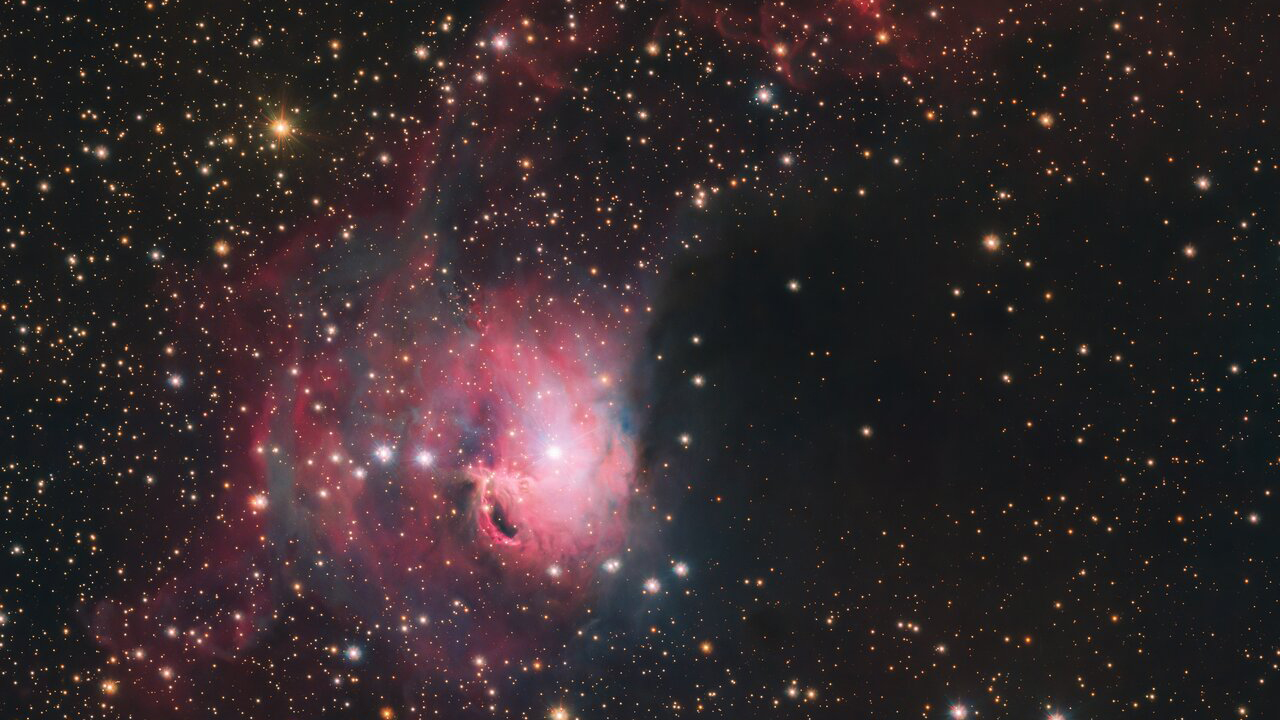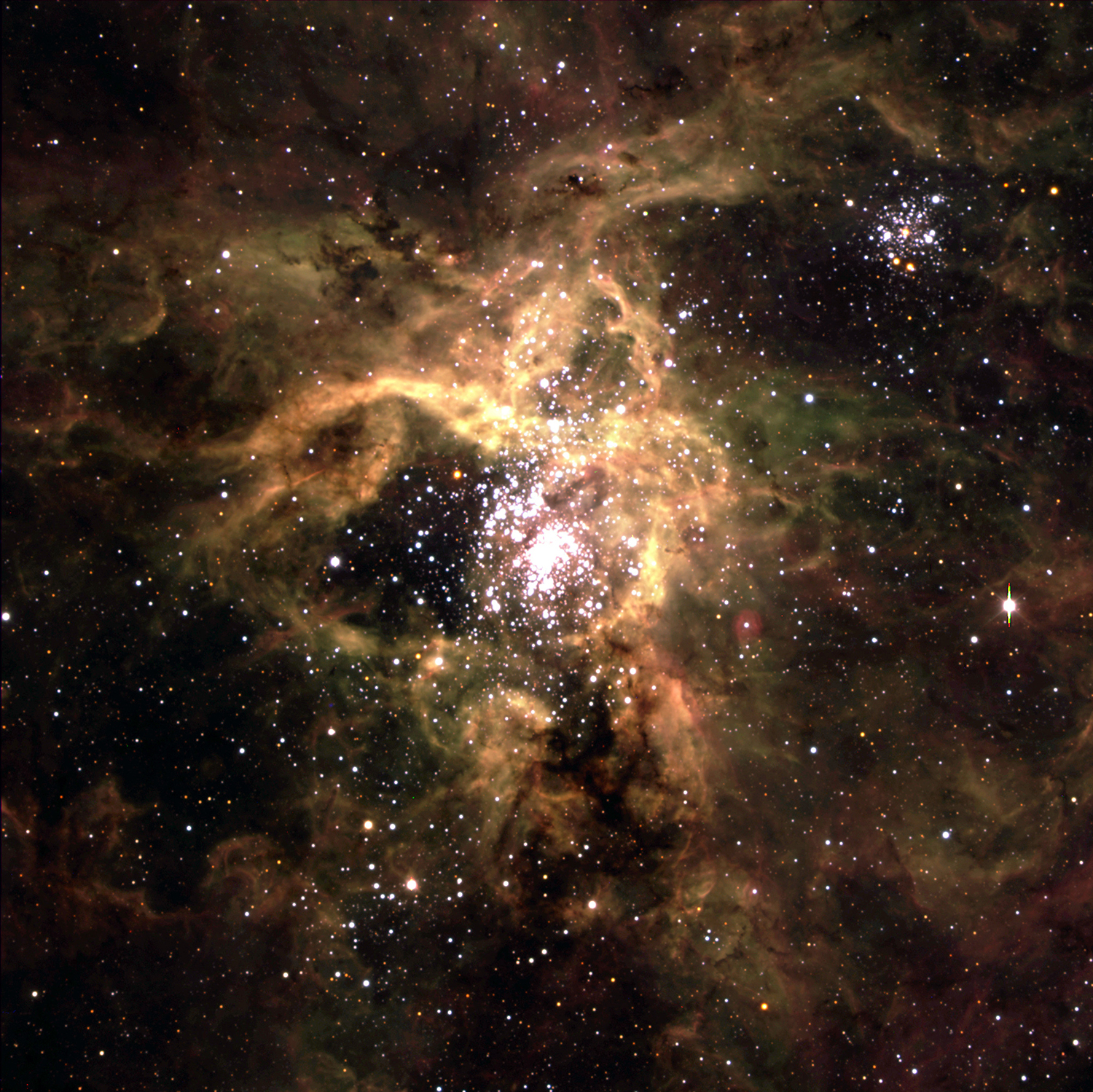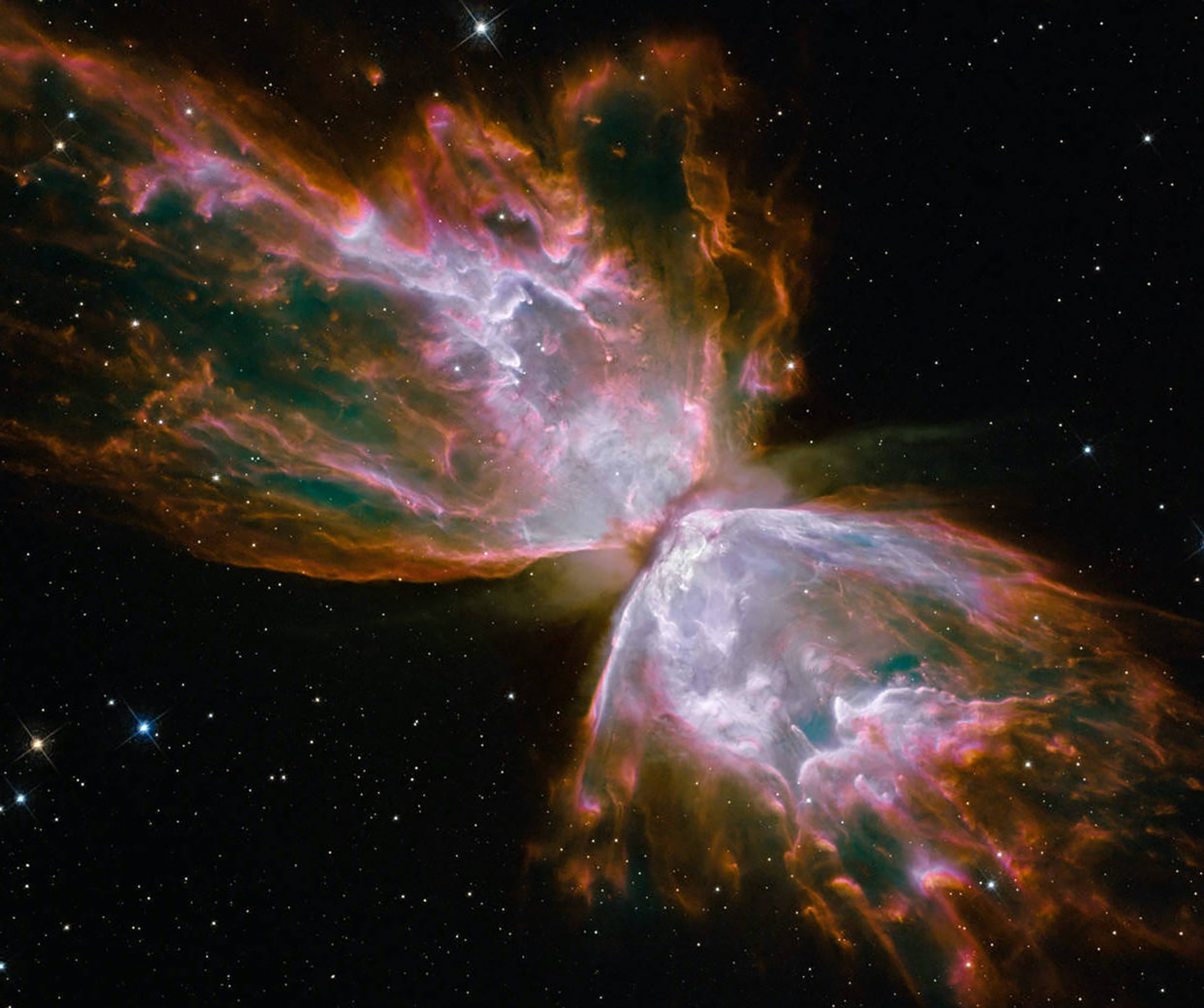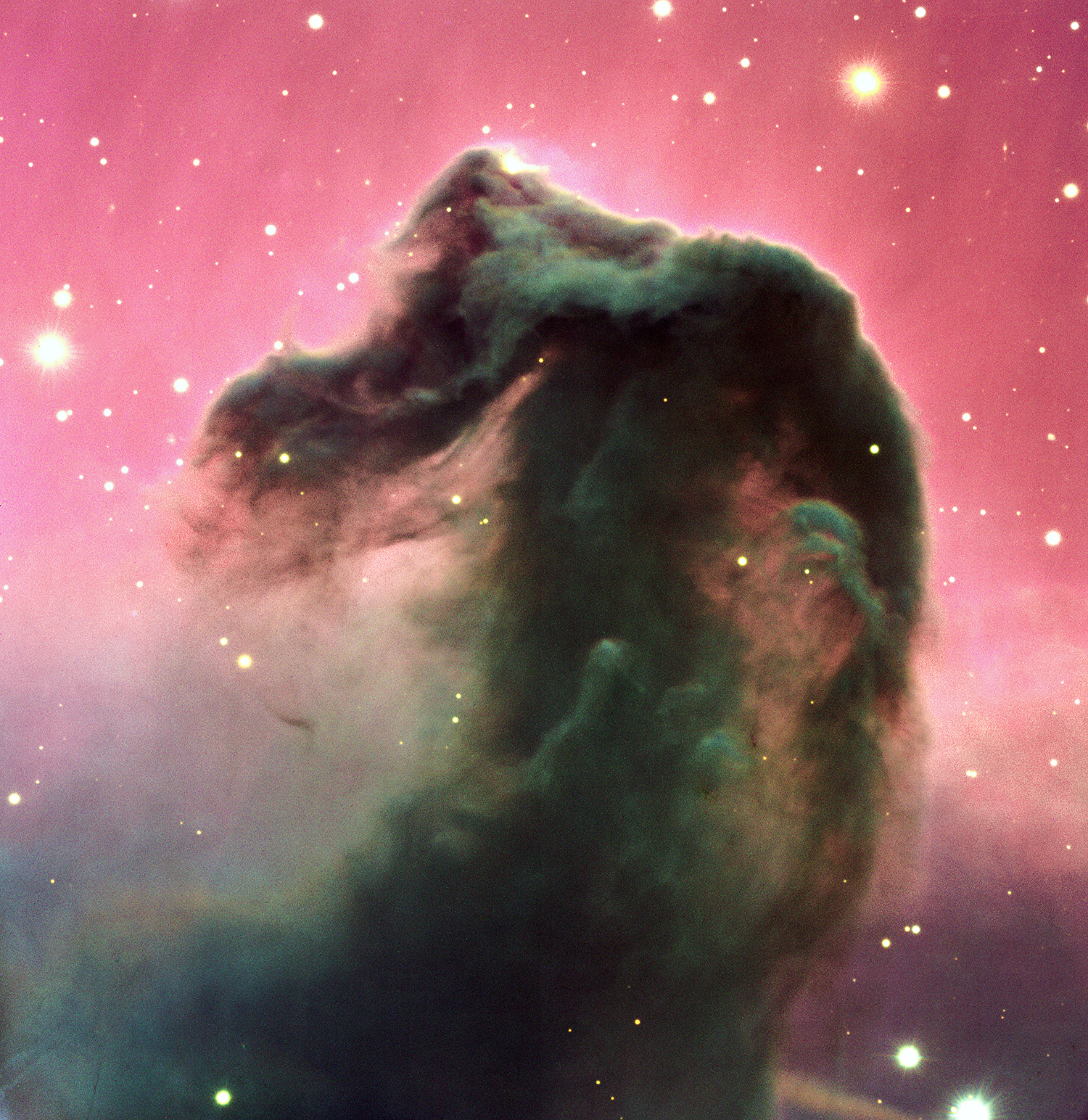
A couple of weeks ago we reported on a platypus on the surface of one of Jupiter’s moons, which could provide the key to finding life beyond planet Earth.
Now, we bring you another intergalactic delight in the form of a stunning red and pink koi carp, captured from the Chilean Atacama Desert.
The beautiful shape is actually a nebula known as Gum 3, an interstellar cloud of gas and dust which sits about 3,600 light years away from Earth, nestled between the Monoceros and Canos Major constellations.
It’s named for Colin Stanley Gum, an Australian astronomer who catalogued 84 nebulae in the southern sky.
The stunning image was captured using the Very Large Telescope (VLT) at the European Southern Observatory’s Paranal Observatory. The telescope is equipped with an enormous 268-megapixel camera, and is designed to survey huge areas of the sky.
The VLT is one of the world’s most advanced optical telescopes, consisting of four unit telescopes with main mirrors of 8.2m diameter and four movable 1.8m diameter auxiliary telescopes.
Nebulae are giant clouds of dust and gas occupying the space between stars. Some are formed by the gas and dust thrown out by the explosion of a dying star, and they also act as a nursery for new stars.
When the intense ultraviolet radiation from nearby young stars hits hydrogen atoms in the cloud, they emit visible light in a range of colors, red and pink in this instance.
Simultaneously, tiny dust particles within the cloud reflect starlight, especially blue hues, which is why the sky looks blue from Earth.
This combination of cosmic colors makes nebulae spectacular to look at.
The koi carp nebula isn’t the only satisfyingly animal-like shape up above us. Here are a few of the others.
The Tarantula

The Tarantula is known for one of the stars in its outer regions because it became Supernova 1987A, the closest supernova to Earth observed since the invention of the telescope.
The Butterfly

The Butterfly gets its name from its three-light year long wings, produced by gas pouring out of a dying white dwarf, a star that has burned up all of the hydrogen it once used as nuclear fuel.
The Horsehead

One of the most well known nebulae in the sky, the Horsehead was discovered by Scottish astronomer Williamina Flemming as she took a closer look at the photographic plate of the Orion Molecular Cloud Complex.
The dark whisp of dust is part of a large stellar nursery, and is believed to contain enough mass to create around 30 Sun-like stars.
Check out our guide to the best cameras for astrophotography, and the best lenses for astrophotography.
We've also got all the information you need about the best low light cameras, and the best star tracker camera mounts.







